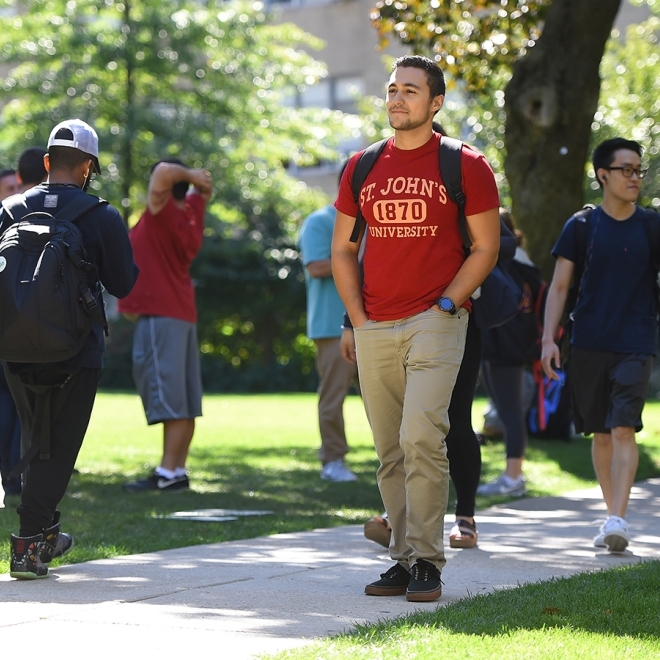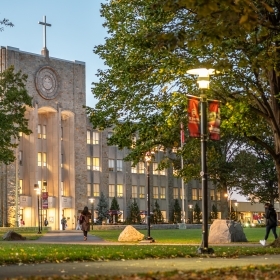A Student Guide to Transferring Colleges

Deciding which college to attend is one of the biggest decisions of a young person’s life. But, the reality is, we don’t always get it right on the first try. In 2021, more than 1.2 million college students made the decision to transfer. While this is a relatively common occurrence in the academic world, it can be daunting—but when you make the decision to transfer colleges, you could find a better academic fit and campus culture, improved financial aid opportunities, and more. First, you have to figure out where to start. That’s where we can help.
Step 1: Research and Find the Right Transfer College for You.
With nearly 6,000 colleges and universities to choose from in the US, the best place to start is by identifying what is most important to you in a school and why you are making the decision to leave your current school. Consider discussing the desire to switch schools with your adviser as they have likely helped students with this in the past. Once you have identified your top criteria for a transfer school, begin the search!
Say, for example, you are a student who is currently at a two-year community college in a small town studying risk management and insurance, but it isn’t offering you the feel and academic push you desire. You can start by searching rankings for colleges that are strong in that area of study and are located in larger cities.
From there, dig a bit deeper into the programs themselves. Check out the benefits of each university’s individual program. Are they highly ranked? Do they have a strong alumni network? Are they located in a region with wide career opportunities? These are just some of the questions you should ask yourself as you delve deeper into each school and move closer to making your decision.
Step 2: Investigate Credit Transfer Policies.
When you transfer schools, you have to verify which courses and credits you’ve already taken will apply to a degree at the new institution. Some schools have articulation agreements that provide a clear path for students to transfer between institutions. For example, if you began at a two-year college, it may have an articulation agreement with a nearby four-year university. In this case, your credits should apply seamlessly and you will not have to retake any courses. Other universities may have course equivalents, where it is not necessarily a one-to-one identical course, but it will still apply toward your degree.
Consult with an adviser to ensure as many credits as possible transfer over. You can also consider leveraging tools such as Transferology® to get a head start. (Be sure to always verify its accuracy with your desired transfer institution.) It is likely some schools will require a transcript of your courses and will provide a list of which courses apply. Some may only count toward general electives, while others will apply directly to your degree.
Step 3: Prepare Your Transfer Application.
Now that you have found your desired school and verified which courses will transfer, it is time to begin the application process! Start by gathering all your required documents, such as the transfer application, official transcripts from your current school, and letters of recommendation (if required). Additionally, you might need to complete a personal statement or essay highlighting your reasons for transferring and the goals you have for your time at the new school. As always, be sure to pay close attention to application deadlines and requirements as some schools may have different timelines or necessary materials to complete the application. Consult with an adviser about financial aid requirements as there will likely be some differences between the schools.
Step 4: Start at Your New School.
Once you’ve completed the documentation and application, you will find out whether you have been accepted to your intended school. Once you receive the good news, it is time to get ready for a smooth transition. Work with academic advisers at your new school to review your transfer credit evaluation and which courses you need to complete when you first arrive.
Remember to familiarize yourself with the resources and support services available at your transfer school. There may be orientation programs, student organizations, or academic support centers designed for transfer students. From there, it is time to embrace your fresh start and enjoy your new academic path.
Transferring to a new school can feel overwhelming, but when you take it a step at a time, you will be able to find the right institution for your goals.
Interested in Transferring to St. John’s University?
With more than 100 majors and programs of study, St. John’s University is an exemplary place to explore, discover, and develop your academic interests. And, as a metropolitan university, you benefit from New York City’s cultural diversity, its intellectual and artistic resources, and its unique educational programs. St. John’s is also a global University, offering you the opportunity to enrich your academic experiences by studying at the University’s campus in Rome, Italy, and locations in Paris, France, and Limerick, Ireland.
“I started my college journey at another university. However, after completing one semester, I realized it wasn't the right fit. I decided to transfer to St. John’s University just two weeks before the start of the new semester. The transfer process was incredibly smooth thanks to my transfer adviser, Melissa Mirabella, who was extremely helpful and supportive. As a third-year student at St. John’s, I’m happy with my decision to transfer. It has been a great experience so far.”
—Ritisha Purohit, Psychology Major, Class of 2025, St. John’s College of Liberal Arts and Sciences
When you transfer to St. John’s University, you experience personalized attention from a team of admission, financial aid, and academic advisers. From academic support to generous scholarships and credit transfer opportunities, we are dedicated to helping you make a smooth transition to our vibrant and welcoming community.
Resources for St. John’s University Transfer Students
To learn more about transferring to St. John’s University or to start your application, check out the following resources:
- Transfer Student Application
- Transfer Student Application Requirements and Transfer Credit Requirements
- Transfer Application Checklist
- Transfer Student FAQs
- Transfer Student Orientation
- Community College Partnerships
- Transfer Student Scholarships
- Majors and Programs of Study
- Enrollment and Housing Deposit
- International Admission
Contact Our Transfer Admission Team
[email protected]
718-990-2051






